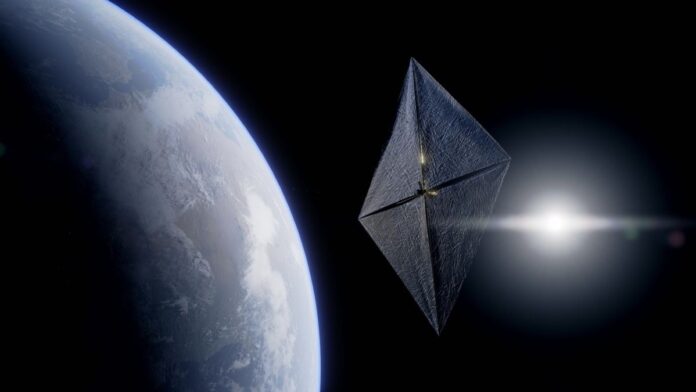Europe’s first sail solar is set to soar in orbit after taking a ride aboard a SpaceX rideshare mission earlier this month.
A shoebox-sized 6U CubeSat packing a 789-square-foot (73.3 square meters) solar sail was one of 114 satellites aboard the Transporter 6 mission which launched from Cape Canaveral Space Force Station on Jan. 3.
The Gama Alpha mission is a first demonstrator for French commercial aerospace company Gama, which says it wants to revolutionize access to deep space through low-cost, reliable and scalable solar sails.
Related: Solar-sailing probes may soon get their moment in the sun
Solar sails use the force imparted by photons from the sun to propel a spacecraft to greater speeds, catching light from the sun in a similar way to which sails on sailboats on Earth use wind to push them forward.
“The first phase will be commissioning the satellite, establishing communications and checking all the vital signs are good. The second phase will be the sail deployment,” Jordan Culeux, Gama lead system engineer, said in a statement (opens in new tab).
“The satellite will be put in slow rotation, initiating the release of four tungsten masses at the tip of each sail petal. The centrifugal force generated by the rotation is enough to ensure the deployment and the structural shape of the sail.”
Once deployed, the mirror-like sail will collect photons to propel the spacecraft through space, allowing the Gama team to test navigation and control algorithms and collect valuable data.
The sail will then help the spacecraft deorbit rapidly, minimizing the risk of debris and demonstrating that such a sail can be used to drag satellites into the atmosphere at the end of their operational lifetimes.
Gama is also looking to use photonic propulsion to send spacecraft into deep space rather than just use atmospheric drag to return satellites to Earth. The firm is planning a 2025 mission to test a solar sail in medium Earth orbit, followed by a mission to Venus in 2026.
The Gama Alpha mission was supported by the French Space Agency, CNES, and a number of other public and private enterprises.
Follow us on Twitter @Spacedotcom (opens in new tab) or on Facebook (opens in new tab).

